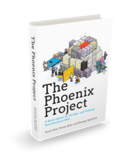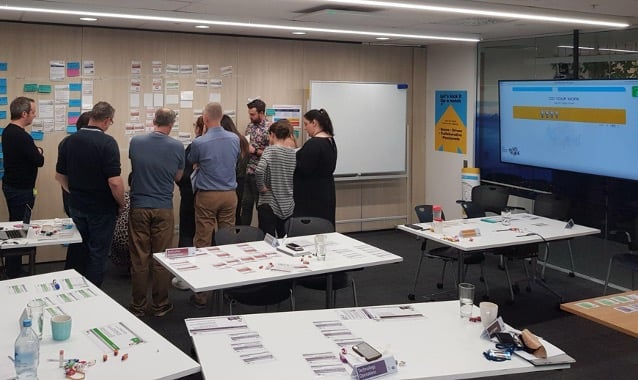Background
Back in the early 1990s, I stumbled into something I learnt to be called IT Service Management. It wasn’t planned, in fact, finding myself in IT was surprising, as I studied Travel and Tourism as part of my further education. However, here I was, being provided with ITIL v2 Foundation training and realising that it all made sense to me. Thirty years later I have expanded my curiosity to include DevOps, Lean, Agile, Kanban, Obeya, and Value Stream Management.
For the majority of my time in a “real job” (I’m a consultant, coach and trainer now) I have been a manager within the IT Operations space and we never talked about value streams. We just discussed… things. I suppose I properly became aware of Value Stream Management (VSM) when, as a consultant, I was asked to look at the onboarding and offboarding processes for an organization. I gathered all the relevant information, spoke to all the interested parties and started to work out how to present my findings before we could look at improvements. Like any good consultant, I cheated and went online to see how others had presented this to get a few ideas which I could crib and mould to suit my client. A few days later I resurfaced, enthused about value stream maps, identifying waste and full of ideas around how this could change my life, professionally.
 Enter 2018 and my introduction to, and ultimately accreditation to facilitate, the GamingWorks business simulation workshop ‘The Phoenix Project’. This is a great, day-long, workshop based on the book, which covers several areas. Teams of ten to twelve people explore and experience how to transform the current IT organization into a more Agile and Lean organization, by experiencing and discussing how to:
Enter 2018 and my introduction to, and ultimately accreditation to facilitate, the GamingWorks business simulation workshop ‘The Phoenix Project’. This is a great, day-long, workshop based on the book, which covers several areas. Teams of ten to twelve people explore and experience how to transform the current IT organization into a more Agile and Lean organization, by experiencing and discussing how to:
- Apply DevOps principles in a real-life situation
- Find the right balance between delivering SLA requirements and IT Projects according to plan
- Visualise work effectively
- Increase the efficiency and effectiveness of the IT Department
- Create a better flow in the teams
- Show the wider business their responsibilities in making IT Projects more successful

We have another simulation called ‘MarsLander’ with similar learning outcomes but focused on the service management and IT operations space.
The Flow of Work
One of the key discussion points in these workshops is the need to identify the flow of work. For many, this is the first time that this has been asked of them, in any scenario.
The value streams being discussed in these workshops are relatively simple ones, as the day is designed to help people think, not to train them formally. However, being asked, “How does the work flow for a project? Where does it start and which teams are involved?” gets the thought juices flowing. “What about BAU? Where do incidents or events start? Who gets involved and in what order?” is another challenge because it may be the same, or it may not. However, there is no really wrong answer, as the teams are encouraged to try, experience and amend if it doesn’t work.
Improvements
Once we have the flow understood and documented on the whiteboard or post-it notes on the wall, we can look to use this information for visualization purposes. Think Kanban. As the teams make more use of this, they can look to identify where they are experiencing wait time and what options are available to them.
Some of these improvements, early on, are related to reevaluating how the work flows. What makes sense at one point, doesn’t necessarily mean that it makes sense later. That’s why we can stop, review and adjust during a round, or make suggestions during a reflection.
Benefits
The real benefit to teams, and I have delivered these to IT teams (service desk, system engineers, development teams), project managers, BAs, product owners, agile coaches, business partners, leadership teams and executive leadership teams, is being exposed to the thinking and concepts of Value Stream Management but without the, to some, scary language which we are all often guilty of using. Talk to some people about value streams and they go blank behind the eyes. Put them in a situation where they recognize the value of understanding the steps involved, who is involved and in what order, and they can see the start of value stream mapping. Bring “shift-left” into the equation, and they can understand the concept of identifying and eliminating (or at least reducing) wait time. I don’t want to give too much away here, as it can ruin the enjoyment for those who participate, but there are some areas where shift-left adds real value, especially involving the test team.
As mentioned previously, having a good understanding of the flow of work, enables teams to create useful visualization techniques, such as Kanban, which in turn not only provides everyone with clear visibility of where work is at but also where constraints in teams exist and where there may be value in cross-training teams.
All improvements are driven by simple Value Stream Mapping early on. Without that, how do you know where to start?
Learning by Experiencing & Team Building
I get great enjoyment from delivering these simulations to organizations across New Zealand and Australia as people turn up, uncertain as to what to expect. Occasionally there have been new groups of people, coming together as a new team. By lunchtime, they are subconsciously aware of the core concepts of VSM and can take that away to start the improvement cycle within their workplace. And they didn’t really realize they were learning it. They have also learnt about their colleagues, whether new or old and leave as a team of people ready to take on the world with new knowledge, experiences and energy.
If you are interested in learning more about the experiential learning workshops, please contact Gander Service Management at www.gander.co.nz
Reference:
- Business simulation workshop ‘The Phoenix Project’
- Book The Phoenix Project
- Business simulation workshop ‘MarsLander’
Picture Credits: Photo by Campaign Creators on Unsplash

James Gander
I am an experienced coach, mentor, trainer, consultant, and leader helping organizations to identify and drive improvements in the way they deliver value to their customers. While my background may be in IT Service Management, many of the practices and approaches can be applied to the wider organization as well, as Enterprise Service Management. With almost 30 years in IT in a variety of roles from helpdesk to IT Operations Manager and 20 years of experience managing, mentoring, and leading local and international teams, I use experience and ideas based on Service Management, DevOps principles, Lean and Agile thinking to deliver solutions that fit the customer’s needs. I am a recognized contributor to ITIL4 Foundation and the VeriSM framework and until the end of 2020, was on the board of the IT Service Management Forum of New Zealand (itSMFnz) as Secretary and am currently a member of ISACA, the TBM Council, the Obeya Association and the Shared Services and Outsourcing Network (SSON).








Comments 0